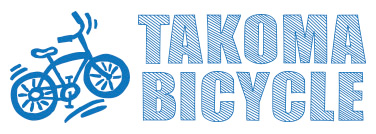
Layering up for fall cycling
Tempted to hang up your bike already? Don't do it just yet! Whether you prefer the woods or the road, pedaling into fall gives you access to sights, smells, and sensations that fair-weather biking can't offer. Here are a few key changes to your cycling wardrobe that will keep you cranking while you wait for the first snowfall of winter.
#1: Cycling Jackets
Okay, the temperature is 40°F to 60°F and your first thought as you head out is to bundle up. Beware! After 10 minutes of hard riding, your body will start generating some serious heat. A lightweight, wind-resistant shell makes a great outer layer to cut the chill until you are up to speed. Make sure the jacket has a full-zip front for venting, a drop tail for coverage in the back and can be compacted to stow in a jersey pocket.
#2: Biking Jerseys and Tops
Wearing multiple light layers of clothing helps trap insulating air between. Start with a thin polyester base layer that will quickly wick moisture away from your skin to keep you dry. On colder days, add an easy-to-shed middle layer such as a synthetic long-sleeve shirt or bike jersey. A vest is another good option, as it warms your core while leaving your arms free to move.
#3: Cycling Pants & Tights
The rule of thumb is to keep the knees covered at 60°F or lower, so time to trade in your cycling shorts for pants, capris or add knee warmers. If it's colder than pant weather, use full-length tights. Breathable tights that have wind-resistant fronts are best but a bit hard to find. If the tights you select don't have padded bottoms (they often don't), wear them over your bike shorts.
#4: Biking Headwear
The vents in your helmet that are such an asset during the scorching summer months can become a problem when it gets cooler. To prevent your forehead and ears from going numb, wear a thin synthetic headband under the helmet. If it's especially cold, choose a skullcap with earflaps, or better yet, a skull cap that can cover your ears too. Still cold? Add a helmet cover to block off all the venting and keep the rain out.
#5: Biking Socks
Cycling socks with merino wool will add needed warmth. Just be sure to pay close attention to how these thicker socks affect the fit of your shoes. Bike shoes tend to be snug anyway, and too many socks might cramp the fit. Too tight a fit inhibits blood flow, which will cause your feet to get colder and numb.
#6: Bike Shoe Covers
Cycling shoe covers (or booties) cover the your shoes and protect from cold and wind. Booties can be made from neoprene, Windtex or a variety of materials that block wind and water to keep your feet warm and dry. Bring your riding shoes and be sure to buy something that fits well. Other options include toe covers, and chemical heat pads.
#7: Arm & Leg Warmers
Mentioned earlier, arm and leg-warmers are perfect for not-too-cold or variable conditions. Put them on for the start of a ride and peel them off as weather warms later in the day. Arm and leg warmers provide lightweight insulation and can be removed and stowed in a jersey pocket without even stopping.
#8: Bike Gloves
It's tough to shift and brake when your fingers are numb. Leave the fingerless gloves at home and go for full-fingered gloves. How heavy, warm or waterproof are really a matter of personal choice. Even if not perfect, a lightweight, wind-resistant pair of gloves will come in handy on many fall and spring rides.


